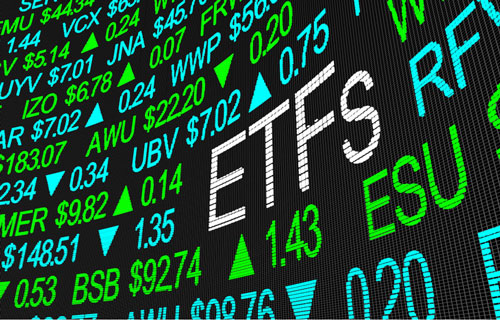Healthcare ETFs invest in a range of stocks from companies that offer medical services such as medical equipment or medications, provide medical insurance, or assist in delivering health care to patients. Some of the most notable companies in the health sector are UnitedHealth Group Inc., Pfizer Inc. as well as Merck &'' Co. Inc. Since the majority of products and services in the healthcare sector are typically considered to be necessary rather than being an investment for discretionary purposes, the healthcare sector is considered to be noncyclical. Healthcare ETFs can be the ideal choice for a defensive investment portfolio.
The healthcare ETFs comprise around 34 ETFs traded within the U.S., excluding inverse and leveraged ETFs and funds under $50 million under management. At the time of February 3, 2022, the health sector that is defined through its S&''P 500 Health Care sector index, has not performed as well as the market overall, by a cumulative return of 17.3 percent in the past 12 months, as compared to S&''P 500's return total of 18.6 percent.
Health Care Select Sector SPDR Fund (XLV)
It is trying to keep track of its standing in the Health Care Select Sector Index, which evaluates how well health care industry does relative to other sectors in the equities market in United States. The exchange-traded fund with a market-capitalization-weighted allocation offers investors exposure to firms that operate in the biotechnology and pharmaceutical sectors and companies that supply healthcare equipment and services.
Its focus is on growth stocks with a large capitalization. The top three holdings include Johnson &'' Johnson, which produces medical devices, pharmaceuticals, and consumer packaged items; UnitedHealth Group, which provides insurance and healthcare and Pfizer, a biotechnology and pharmaceutical company.
Invesco S&''P 500 Equal Weight Health Care ETF (RYH)
RYH aims to track its performance against the S&''P 500 Equal Weight Health Care Index, the index that weighs equally the stocks of companies that operate within the health segment of the S&''P 500 Index. This fund is invested in firms that provide medical equipment products, supplies, technology, and services, biotechnology and pharmaceutical firms, and businesses working in the tools for the life sciences and services sector.
The fund is a blended strategy that invests in various growth and value companies with different market cap. The top three holdings of RYH include Cerner Corp., a provider to the health industry of information technology as well as hardware and devices; Viatris Inc., a pharmaceutical company; and Vertex Pharmaceuticals, Inc. Biotechnology company.

iShares U.S. Healthcare Providers ETF (IHF)
IHF is a tracker of IHF's participation in the Dow Jones U.S. Select Healthcare Providers Index, an index made up of U.S. healthcare provider equities. The ETF's primary exposure is to businesses that provide healthcare services and managed healthcare. There is also exposure to businesses that run health facilities, supply healthcare technology, and businesses working in the life sciences tool and services sector.
The fund employs a blended strategy that invests in an assortment of value and growth stocks of companies with different market sizes. The top three holdings of IHF include UnitedHealth Group; CVS Health Corp.
What to Look For In an ETF?
When investing in ETFs, Examining a few elements of every ETF is beneficial to ensure you buy the thing you want to purchase. Three factors to be looking for:
The sub-sector
Each sector may react differently to circumstances in the industry. For instance, pharmaceutical companies react differently to medical providers to certain changes within the sector because they depend on different funding sources. This is why you need to determine the businesses you want to manage.
The track record of investment
You'll also need to examine the history of the ETF. Has it performed better than the market or underperformed during times of strong performance? The track record of the ETF can give you an idea of what to expect from the ETF.

The cost ratio
Be sure to pay particular attention to the cost ratio, which informs you the amount it will cost to keep the fund in the year as a percentage of the amount of money you put into it. It's also worth noting that larger ETFs tend to have lower expenses, as they can spread the cost of operating the fund over many assets. Thus, the most affordable funds could frequently be the most expensive ones with a low expense ratio, which is an important indicator of what constitutes a top ETF.









